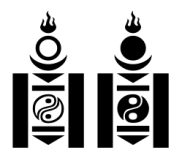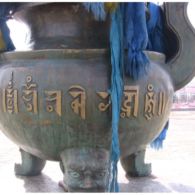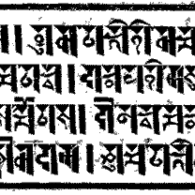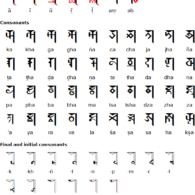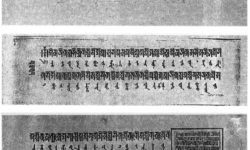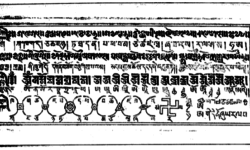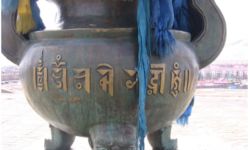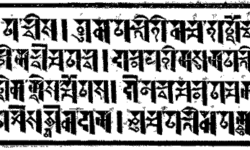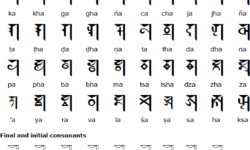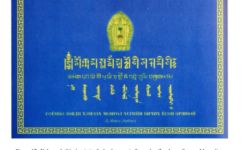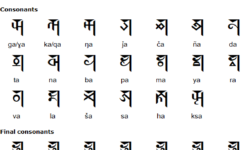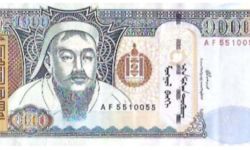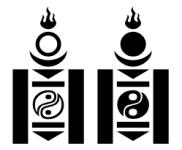Profile
The Soyombo script may be the only writing system in the world that is endangered in the sense that virtually nobody uses it, yet everyone in its home culture recognizes one of its letterforms and sees it almost every day.
Soyombo – the name means “self-developed holy letters” – is one of at least five scripts that have been used to write Mongolian. It is said to have been designed in 1686 by Bogdo Zanabazar (1635–1723), the first spiritual leader of Tibetan Buddhism in Mongolia, who according to tradition saw the letterforms appear in the night sky. (He also developed a Horizonal Square script, also known as Zanabazar Square.)
Zanabazar created it for the translation of Buddhist texts from Sanskrit or Tibetan, and both he and his students used it extensively for that purpose, but it was too ornate and complex to be written hastily or used for everyday purposes.
It continued to be a familiar sight in temples, on official seals and on prayer wheels, though, and in time, this ceremonial and decorative use translated into the secular realm: the script, and especially the character for Soyombo itself, became so central to Mongol identity that in 1921 it appeared on the national flag.
In a sense, the very fact that it was no longer in general use meant it could take on a purely iconic value. In 1960, it was included as part of the Emblem of Mongolia, and has also been used on the country’s postage stamps and money.
It is, by now, so associated with the national character that it is, in essence, a brand; so it is not surprising that it has become the name and logo for a premium vodka.
To Mongolians, it has made the transition from letter to rich, complex visual symbol. One interpretation sees it in five vertically stacked elements. The top part, the flame, is seen as a symbol of prosperity, the three branches of the flame standing for past, present and future. The sun and moon stand for the sky, a central feature of Mongolian spiritual beliefs. The two triangles represent a spear and an arrow, traditional Mongol weapons. The circle, an unstable form, is stabilized between two guardian rectangles. The round yin/yang–style form stands for two fishes, who never close their eyes and represent watchfulness – and in being male and female, they stand for fertility.
The situation may change if and when Soyombo is included in the Unicode standard, but given that there are so few Soyombo practitioners left, it may become the only alphabet in the world to have dwindled to a single letter.
You can help support our research, education and advocacy work. Please consider making a donation today.
Links
General Script, Language, and Culture Resources
- Omniglot
- Wikipedia
- Unicode (PDF)
- Soyombo Alphabet 330 Years Video
- Mongol Scripts Background
- Soyombo Background Unicode
- Scriptsource
- Soyombo Karaoke App
